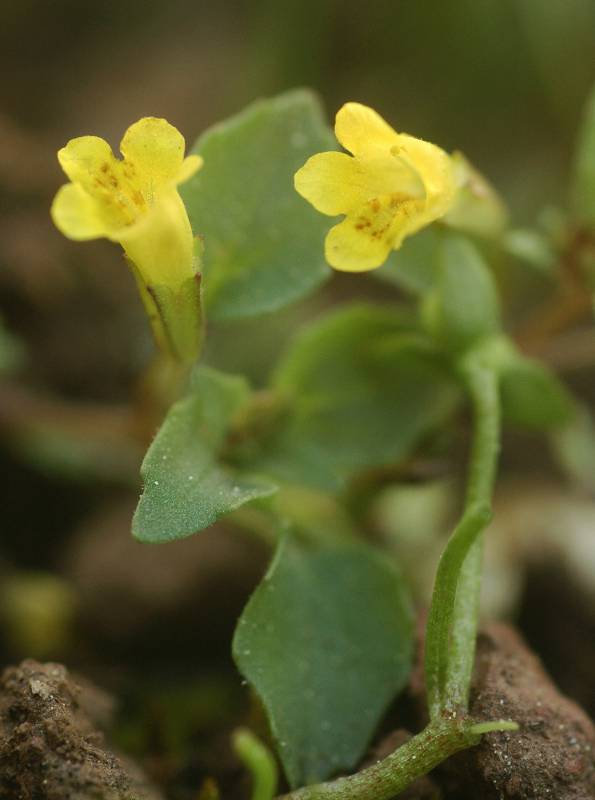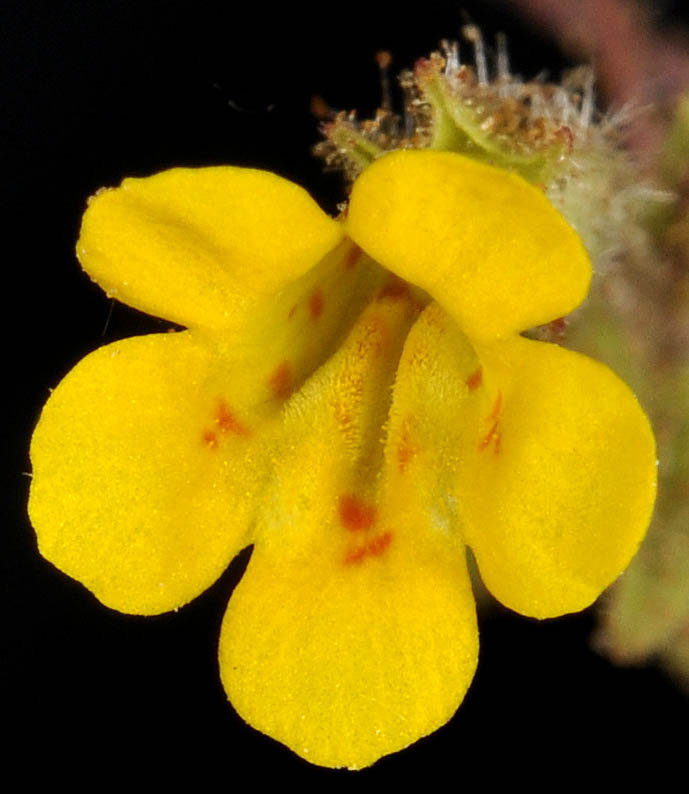Erythranthe patula
Erythranthe floribunda
stalk-leaved monkey-flower
purple-stem monkey-flower
Leaves cauline, basal ones not persistent;
petioles 8-25 mm;
blade deltate or somewhat ovate to lanceolate, approximately 4-12 mm long and 3-10 mm broad, palmate venation with 3 veins, base rounded to cuneate-truncate, margins usually finely toothed, apex acute to obtuse, surfaces glabrous as stems.
Leaves opposite, deltoid-ovate to sub-cordate, dentate or denticulate, sub-palmate or nearly pinnately veined, the blade 1-3 cm. long, the petiole shorter.
Axillary flowers 1-10, emerging from nodes throughout; fruiting pedicels 10-25 mm, glandular as stems;
calyx tubular, barely or not inflated, 5-6 mm, margins with distinct teeth or lobes, slightly stipitate-glandular to sparsely hirtellous, lobes pronounced, erect;
corollas yellow, lower limb commonly with some red or brownish dots, symmetric radially or bilaterally, regular or weakly bilabiate;
tube-throat funnel-shaped, 7-8 mm, protruding beyond calyx margin;
lobes oblong, apex rounded to truncate;
styles glabrous;
anthers not protruding, glabrous.
Flowers solitary in the leaf axils on long pedicels;
calyx 4-8 mm. long, the 5 acute, equal teeth less than 2 mm. long;
corolla yellow with some red dots, 6-14 mm. long, only slightly bilabiate, the lips about equal and only slightly flaring, the throat with pubescence on the lower side;
stamens 4.
Capsules 4-6 mm, included.
Capsule.
Erythranthe patula
Erythranthe floribunda
- Local floras:
BC,
OR,
WA
- Local Web sites:
Flora NW,
PNW Herbaria
WildflowerSearch
iNaturalist (observations)
- LBJ Wildflower Center
- SEINet
- Plants of the World Online
- Encyclopedia of Life
- Wikipedia
- Google Image Search
- Local floras:
BC,
CA,
OR,
WA
- Local Web sites:
CalFlora,
CalPhotos,
Flora NW,
PNW Herbaria
WildflowerSearch
iNaturalist (observations)
- LBJ Wildflower Center
- SEINet
- Plants of the World Online
- Encyclopedia of Life
- Wikipedia
- Google Image Search



